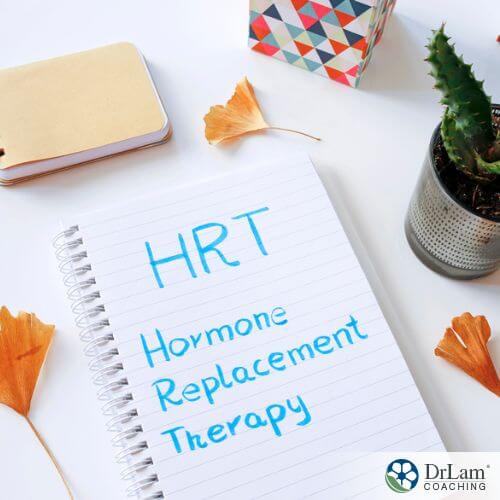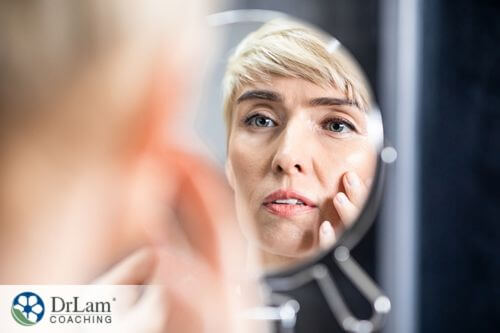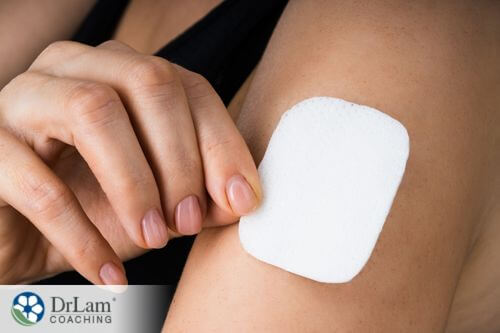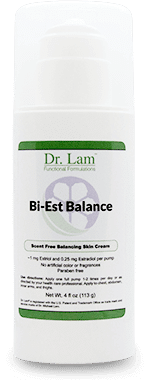The use of bioidentical hormone replacement therapy (BHRT) has been on the rise for the last few years, and here’s why. For years, hormone replacement therapy has been the default option in replacing hormones in people that need them. However, there were frequent concerns with its safety, considering its numerous side effects. In light of this, many health experts have turned to BHRT, claiming it is the better option because it is more “natural.” However, are these claims scientifically justified, and if so, how and when should BHRT be applied? Let’s find out.
 BHRT is an acronym for bioidentical hormone replacement therapy, and to understand it, we need first to consider what hormone replacement therapy is.
BHRT is an acronym for bioidentical hormone replacement therapy, and to understand it, we need first to consider what hormone replacement therapy is.
Essentially, HRT (hormone replacement therapy) is a therapy that replaces the hormones that are depleted in the body as one ages. While HRT can also be used for men, it is typically administered to women to help manage the symptoms of menopause by supplementing hormones lost during the menopausal transition.
With that said, BHRT is a therapy that involves the administration of bioidentical hormones to supplement depleted hormone levels in men and women. Bioidentical hormones are man-made hormones obtained from plants that are chemically identical to the ones the body makes, enabling easier absorption by the body and lower side effects. As with traditional hormone replacement, BHRT is mainly used in managing menopausal and perimenopausal symptoms.
The primary difference between HRT and BHRT is that the latter uses hormones that are chemically identical to the ones our bodies produce. On the other hand, HRT uses hormones obtained from pregnant horses or made artificially in scientific labs. Generally, bioidentical hormones are referred to as natural hormones.
However, do not let BHRT's “natural” tag fool you; they are still made in laboratories by man. While they are advertised as natural, they still have to undergo a lot of processing to be approved by the FDA. BHRT's chemical structure is identical to our own body's prodcution of hormones, but HRT chemicals do not necessarily look like the body's own hormonal structure and can be very damaging due to the similarity but not totally identical structure. Meaning the HRT could sit on your body's estrogen receptors, but have totally different signaling system in your body due to its different chemical makeup.
Both BHRT and HRT are effective in helping symptoms associated with depletion of estrogen, progesterone, and testosterone, which are the hormones that usually take a major hit during and around menopause. However, BHRT is usually more tolerated and has less long term bad effects compared to HRT.
There are two types of bioidentical hormones, depending on their preparation. They are:
Pharmaceutical companies produce this class of bioidentical hormones, and products usually gain approval from the FDA before they can be circulated into the market. For example, testosterone gel or injections, estradiol patches, micronized progesterone pills are all bioidentical, but can be found in your regular pharmacy.
This class of bioidentical hormones is custom-made in pharmacies using a process known as compounding. This involves combining hormones based on the specific needs of the individual. The logic behind this procedure is that humans have different bodies and will, therefore, need a unique hormone combination that meets their individual needs and symptoms. Testing is important via blood or saliva to determine the optimal dosing for each individual, but it's also important to go by patient's symptoms when titrating. Unlike their regular counterparts, compounded bioidentical hormones are not FDA-approved. However, its ability to personalize and titrate down to the milligram has its uses for sensitive people.
You can also get bioidentical hormone creams like bi-est or progesterone creams in set ratios and milligrams over the counter for those who are less sensitive.
 As we age, our hormone levels drop. This is even more pronounced in women in perimenopause and menopause. Several symptoms may accompany low hormone levels, and they include:
As we age, our hormone levels drop. This is even more pronounced in women in perimenopause and menopause. Several symptoms may accompany low hormone levels, and they include:
Aside from old age, the hormones in the body may also fall due to certain conditions, one of which is stress. The NeuroEndoMetabolic (NEM) Stress Response is the body's natural stress-coping mechanism. This system consists of six circuits that span several organs and systems and help to manage stress in the body.
The particular circuit responsible for hormone regulation is the hormone circuit, and it comprises the adrenal glands, thyroid, and gonads (male testes and female ovaries). When there’s a dysregulation in this circuit, the ovarian-adrenal-thyroid (OAT) axis, which is crucial in women’s reproductive health, may be affected.
If the stressed state of the body persists and the hormone circuit remains dysregulated, aside from the symptoms of low hormone levels that can be observed, the individual may also develop conditions like Adrenal Fatigue Syndrome (AFS). Adrenal fatigue is an adrenal dysfunction where the body’s stress response cannot keep up with chronic stressors.
One of the best management options for the symptoms that may accompany a decline in hormone levels is hormone replacement therapy. Bioidentical progesterone can be used pre-menopause and to regulate cycles. Estrogen and progesterone can be administered during perimenopause (around menopause) and post-menopause. Testosterone can also be administered to improve libido.
Below are the forms in which BHRT can be administered:
This is the form many health experts prefer as chemical substances applied topically go straight into the bloodstream and bypasses the first round of metabolism by the liver. When using these creams, it is important to beware of the possibility of transference of estrogen to other people through skin-to-skin contact for the first six hours. Application should be done on the inner under arm or inner thigh for best absorption.
While the oral route is the most common administration route for estrogen replacement therapy, it is not necessarily the best for several reasons. Firstly, oral estrogen undergoes first-pass liver metabolism, which can put undue pressure on the livers of people with liver congestion. Also, it can cause breast swelling, headache, vaginal discharge, and nausea. Progesterone and dehydroepiandrosterone (DHEA) can also be administered orally and have different function. Many practitioners recommend progesterone orally for those with sleep issues as the metabolite that the liver produces from breaking down progesterone actually makes people sleepy. Therefore, taking progesterone orally might be a better option for you if you have sleep issues.
Bioidentical estrogen can also be given using transdermal patches. This is fast gaining prominence because of its convenience and because it bypasses the liver and goes straight into the blood. However, heat and direct exposure to sunlight can cause irregular dosing of estrogen in individuals using patches.
This is a good way of administering testosterone weekly. It remains in the body for a relatively long time and enters the bloodstream directly, making them useful for people with liver problems.
Hormone pellets have been used for nearly a century. However, no hormone pellet has FDA approval, primarily because of the inconsistent manner drugs are delivered to the body. Also, pellets may contain potentially dangerous estrogen and testosterone doses. This can pose a health risk, especially in those with certain conditions like Adrenal Fatigue because you can easily overdose on hormones and are unable to take the pellets out once it's been injected.
This is an effective administration route alternative for BHRT. Troches are absorbed quickly into the bloodstream, bypassing the liver’s first-pass metabolism unless some of the medication is swallowed. However, this administration form is not as common and has to be made by a compounding pharmacy.
There are three primary hormones that can be administered in BHRT. They are as follows:
 Estrogen is an important hormone, found in high amounts in women. It helps to regulate the menstrual cycle, develop and maintain the female reproductive system, and helps ovulation. As menopause nears, the estrogen levels in the body decrease due to reduced production by the ovaries. This then interferes with women's menstrual cycle and causes some physical changes.
Estrogen is an important hormone, found in high amounts in women. It helps to regulate the menstrual cycle, develop and maintain the female reproductive system, and helps ovulation. As menopause nears, the estrogen levels in the body decrease due to reduced production by the ovaries. This then interferes with women's menstrual cycle and causes some physical changes.
Bioidentical estrogen therapy involves the administration of the estrogen E2, also called estradiol, which is the most potent estrogen form, and E3, estriol. Estradiol and Estriol BHRT can help manage the symptoms of reduced hormones in the body, like hot flashes, vaginal dryness, fatigue, brain fog, mood changes. The safest form of administering bioidentical estrogen is using transdermal patches or creams. Estrogen should never be given alone and should always be given with progesterone, even if you have had a hysterectomy. Estrogen receptors are not only in your uterus, but are found throughout the body. Estradiol is important for the prevention of bone thinning, is cardioprotective, and is also neuroprotective.
Progesterone is another vital hormone for females, as it plays key roles in menstruation, pregnancy, and counteracting estrogen. It is also involved in the production of sperm in men. Popularly termed the pregnancy hormone, progesterone is usually administered in HRT as progestin, the synthetic form of the hormone. This form is not recommended as its chemical structure is not bioidentical to progesterone and can cause a slew of side effects for post-menopausal women. With BHRT, bioidentical progesterone can be administered. This can either be in combination with estrogen or alone. Administration or bioidentical progesterone can be oral or transdermal.
Testosterone is generally seen as the male sex hormone. But while there’s some truth to that, it is not entirely correct. Though testosterone is produced in significantly lower amounts in females, it is still important for females, and it is used in maintaining muscle mass and metabolism. In women, topical testosterone is the most tolerated form of administration. In men, there is the option of cream, gel, injections, etc.
Dehydroepiandrosterone (DHEA), testosterone’s precursor, can be used prior to starting testosterone if patients aren't ready to start testosterone yet. Bioidentical DHEA can be administered topically or using pills.
The most straightforward indication to use BHRT is the start of menopausal or low hormone levels symptoms. Usually, your health practitioner will start you on a low dose of whichever bioidentical hormone you need, typically estrogen and progesterone, and the doses can be ramped up with time.
Another indication to use BHRT is if you are reacting adversely to HRT. While BHRT is not risk-free or free from side effects, your body system may react more mildly to BHRT. Regardless of the indications to use, however, ensure you speak with your health practitioner before commencing a dosage of bioidentical hormones. All hormone therapies can have serious risks because of the delicate balance of hormones in the body.
While BHRT is touted as a replacement for HRT because it is more natural and may be more compatible with the body, it has safety concerns as well. Below are some of the side effects of BHRT use, as identified by research:
As this list shows, even BHRT does not guarantee you will not have side effects. Some health experts have even concluded that there is no difference between HRT and BHRT side effects-wise. Beware that doing estrogen by itself, especially non bioidentical estrogens can increase your risk of uterine or breast cancer, that's why it's important to always do progesterone replacement with estrogen replacement.
Below are important tips to take note of when taking BHRT:
 Bioidentical progesterone can be taken during premenopause for two weeks in a month, usually days 14-28 of the menstrual cycle.
Bioidentical progesterone can be taken during premenopause for two weeks in a month, usually days 14-28 of the menstrual cycle.BHRT is an increasingly popular alternative to hormone replacement therapy. Some claim BHRT has fewer side effects and is more effective, considering the hormones are chemically identical to the hormones produced in the body. However, no scientific studies back this up, and care must be taken. Nonetheless, BHRT can be useful in hormone replacement. Ensure you speak to a health practitioner before commencing the therapy.
For more information about bioidentical hormones, the team at Dr. Lam Coaching can help. We offer a free, no-obligation phone consultation at +1 (626) 571-1234 where we will privately discuss your symptoms and various options. You can also send us a question through our Ask The Doctor system by clicking here.

Bioidentical estrogen cream to help balance hormones
Oral estrogen replacement therapy is actually the commonest way of administering estrogen in traditional hormone replacement therapy. However, estrogen administered orally undergoes significant first-pass processing by the liver. Hence, its use is generally discouraged for BHRT, with topical creams and troches preferrred.